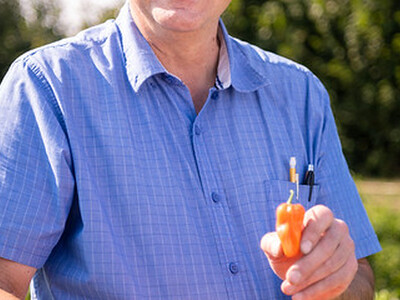NASS and WASDE
NASS Crops Branch Chief Lance Honig. It's a question that you may have found yourself asking. “Why does USDA estimate production? It's kind of a two part question.”The National AG Statistics Service’s, Lance Honig spoke about USDA’s two main monthly crop reports during the annual Agricultural Outlook Forum.
First of all, he pointed to a basic point, which is that the information is useful “It’s all about why anyone wants to estimate or forecast yield and production. And obviously, there's tons of uses out there. There's tons of people using the information out there. Everybody from farmers and policymakers to researchers and even other folks within USDA.”
And how do they use the information?
“We need information to make good marketing decisions. We need to use it to design the programs that are out there. That's why our legislators need good information as well.”
Another important consideration, he adds, is that USDA reports also help level the playing field so that everyone gets the same information at the same time.
“That's really one of the greatest roles we bring, in addition to the accuracy of the data. And it's about equal access and it's about unbiased estimates and production. There are others out there who also estimate and forecast yield and production. But they're all going to have some kind of vested interest and they're not likely to share it openly and freely as we do at USDA.”
So which agencies at USDA are mainly responsible for forecasting and estimating crop production across the country?
“Really two players that we have to talk about. The first is NASS”
NASS stands for the National Agricultural Statistics Service.
“Our mission statement is simple to provide timely, accurate and useful statistics in service to U.S. agriculture.”
And who is the second player at USDA he mentioned?
“Also at play is the World AG Outlook Board. They are responsible for the WASDE report.”
WASDE stands for the World Agricultural Supply and Demand Estimates, “The work that they do is really about coordinating analysis across a number of USDA agencies.”
So NASS collects data for the agricultural situation in the United States for its crop production reports. While the World AG Outlook Board's WASDE Report has more analytical and international picture.
“They accomplish their work through what they would call inter-agency commodity estimates committees.
These individuals come together to analyze the data that they have and establish estimates at some times for the U.S., but they're responsible across the world as well.”

















